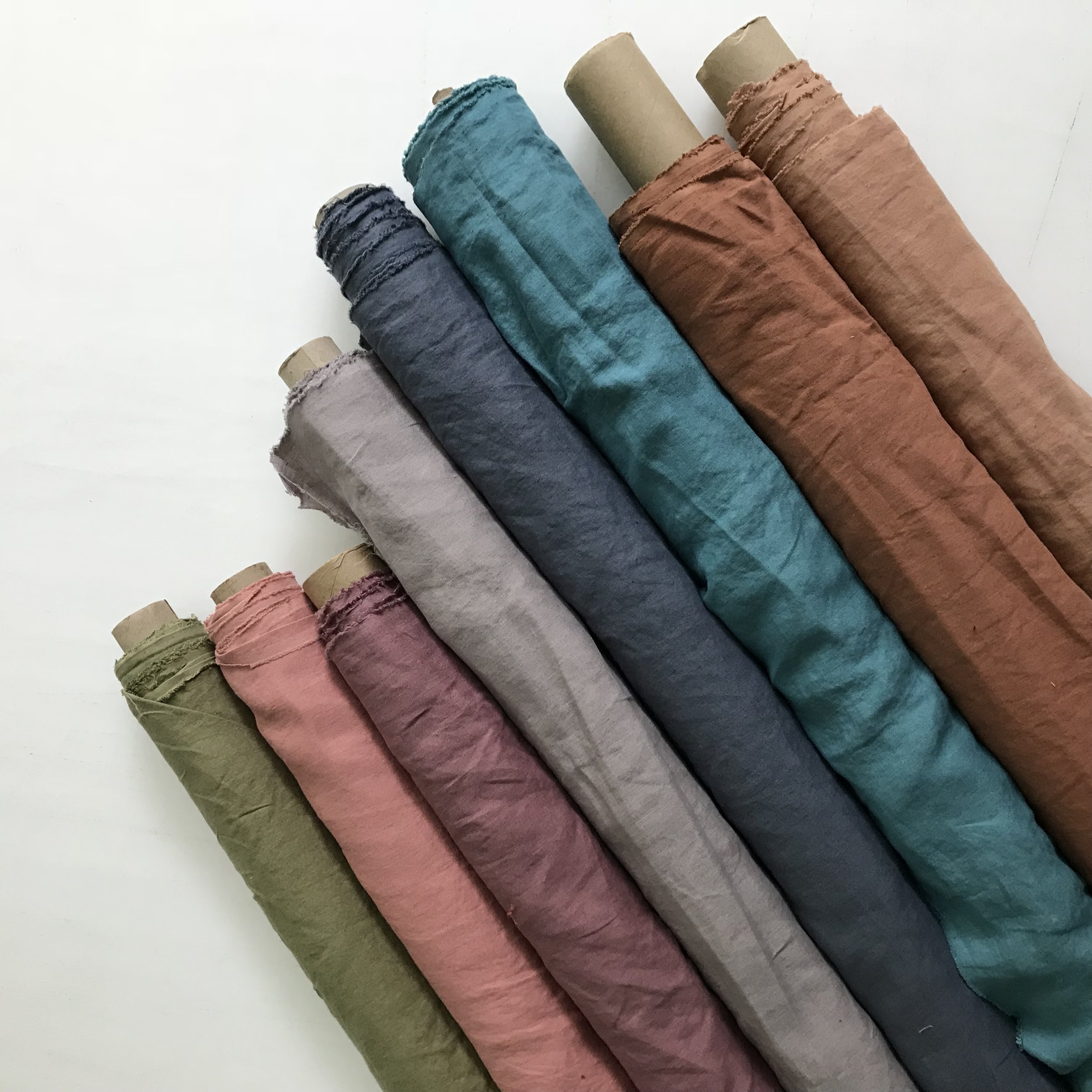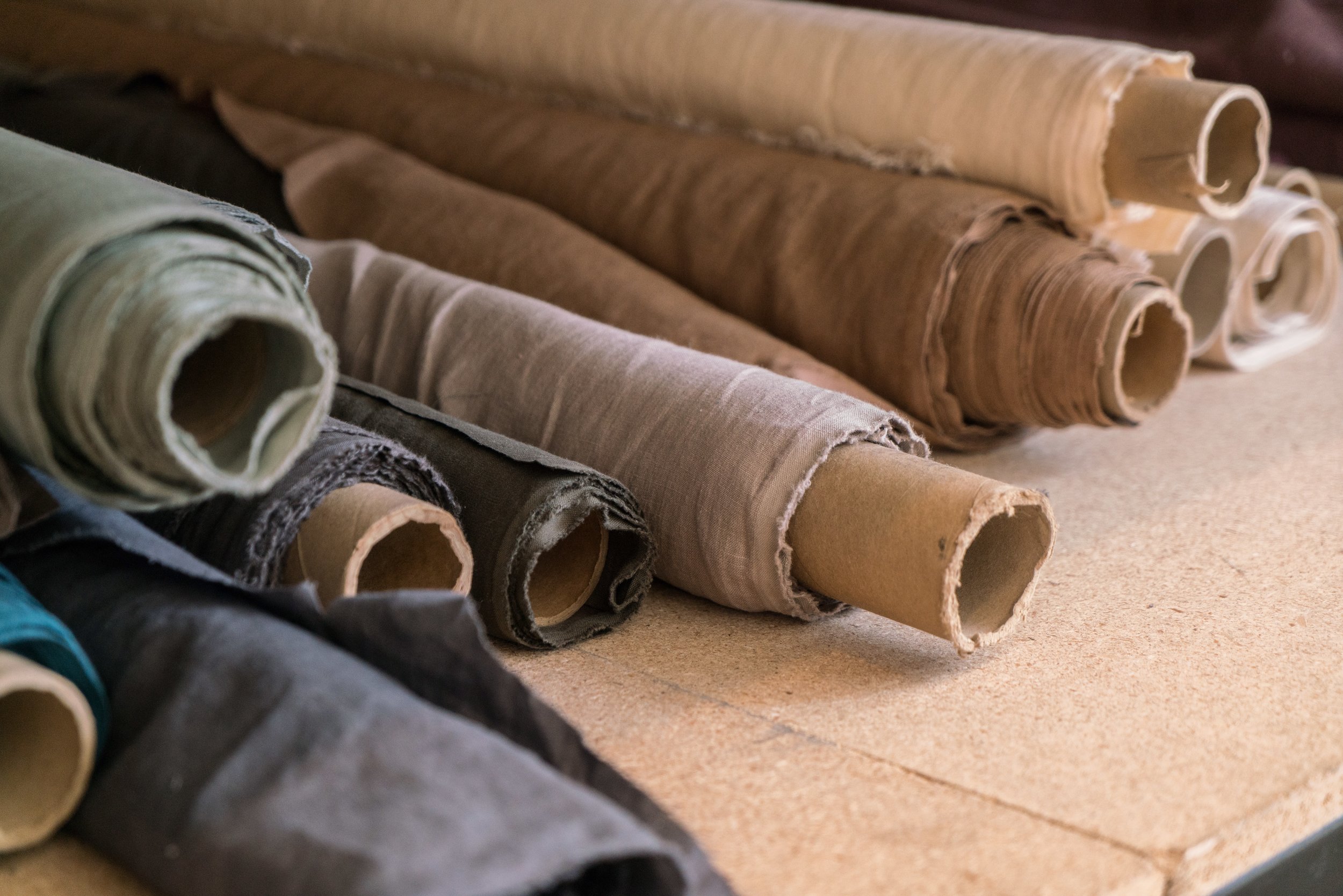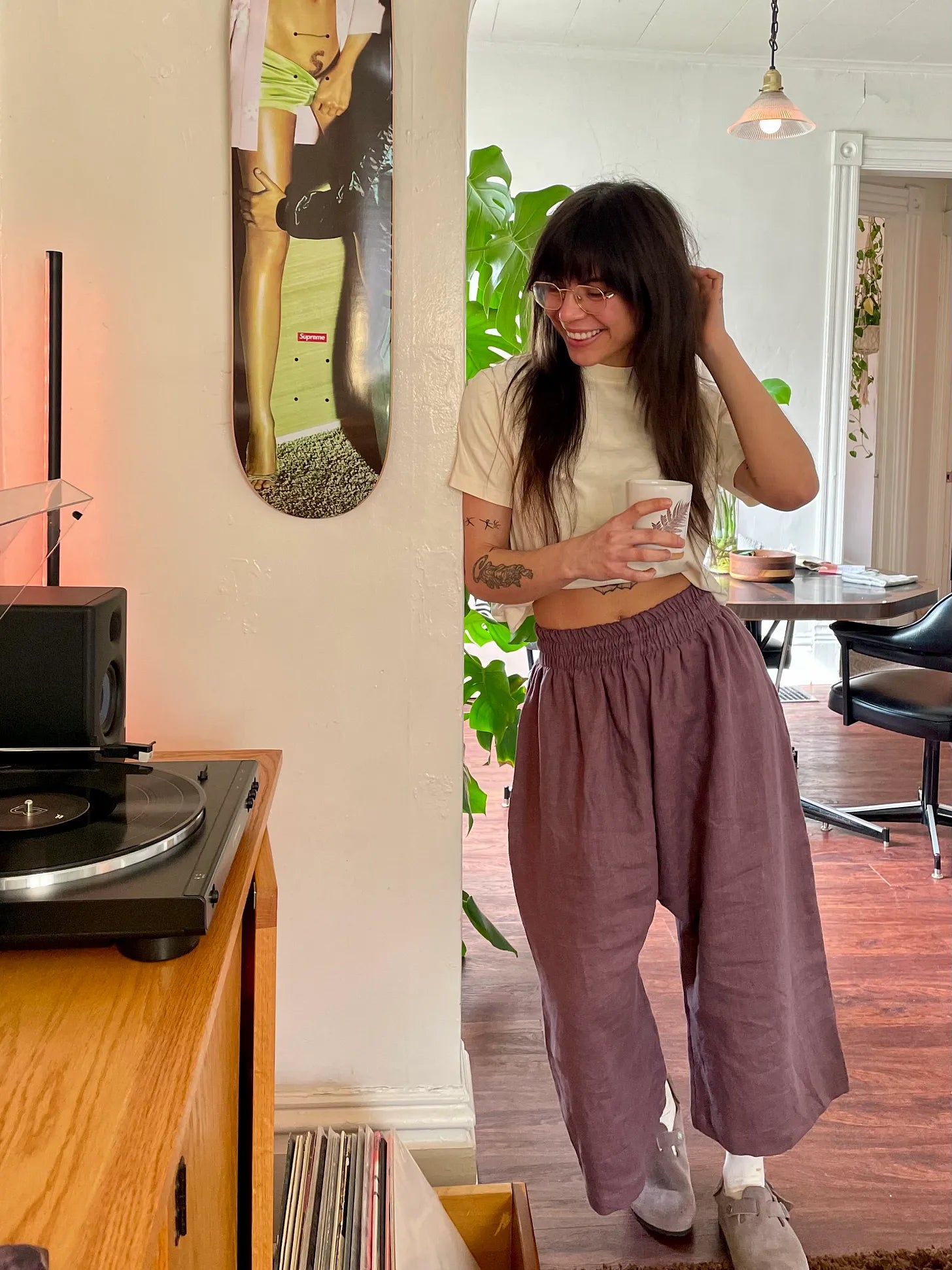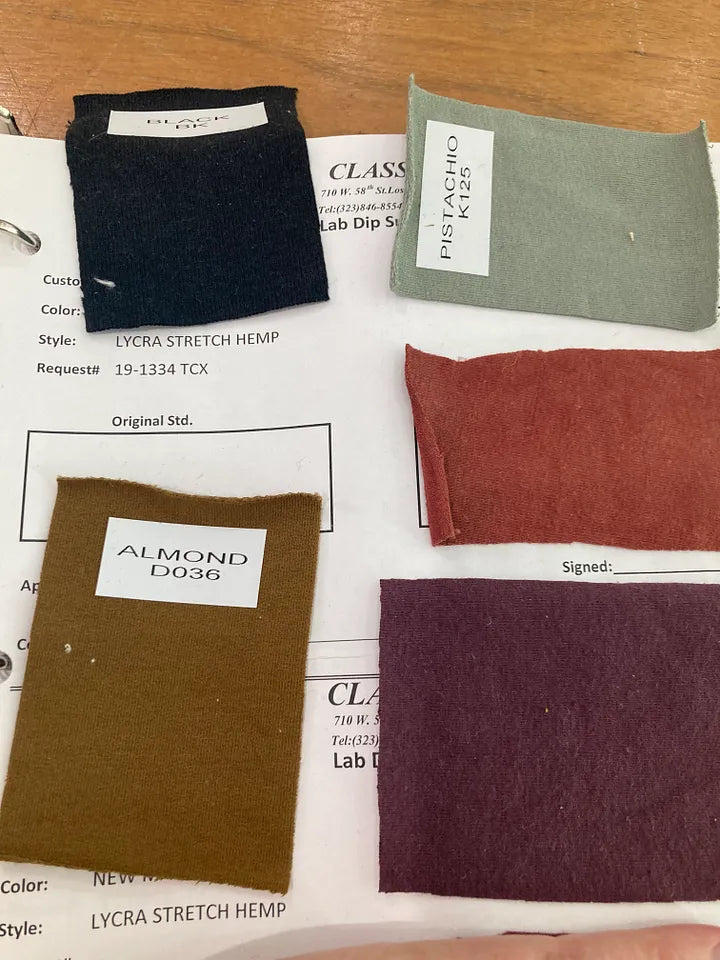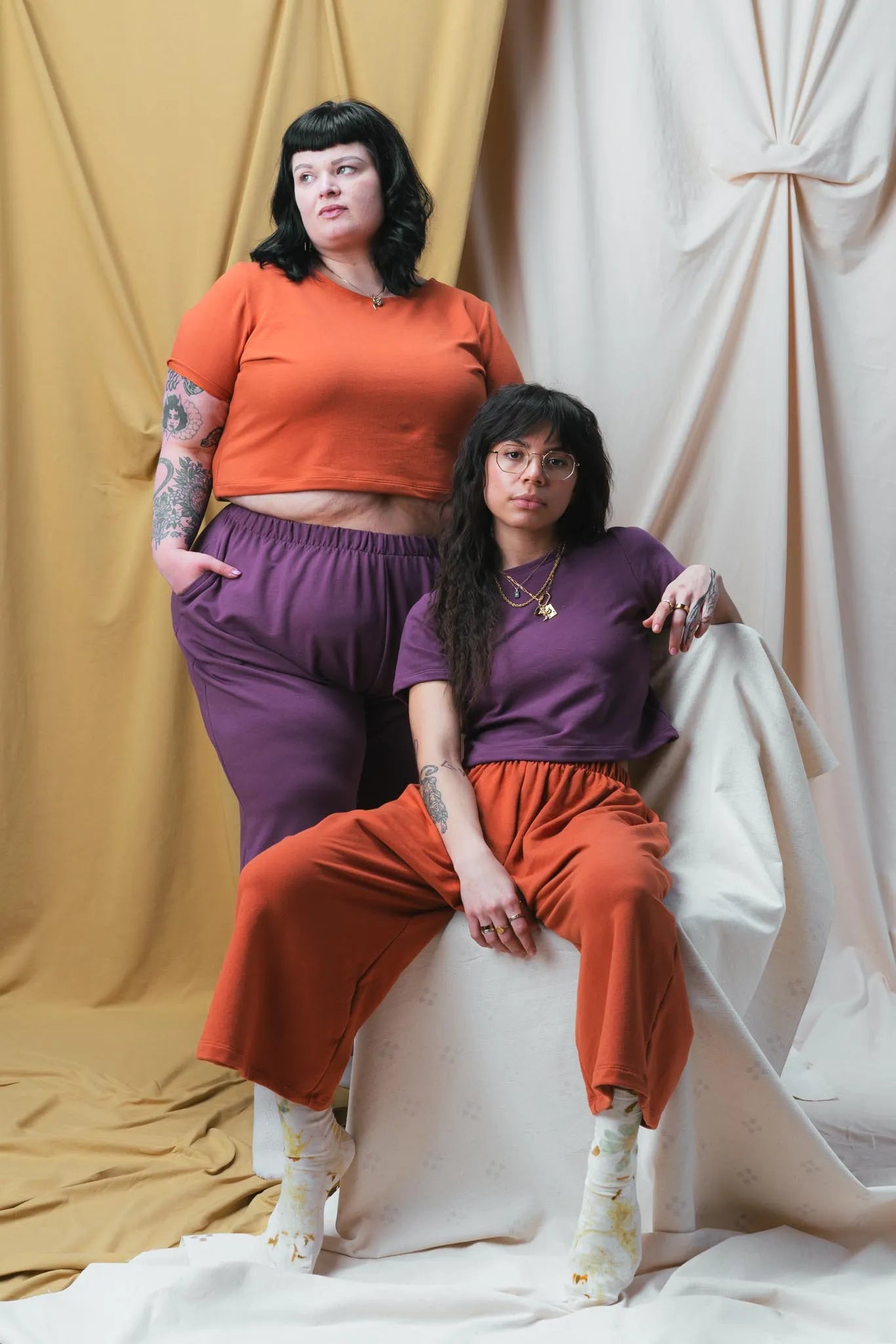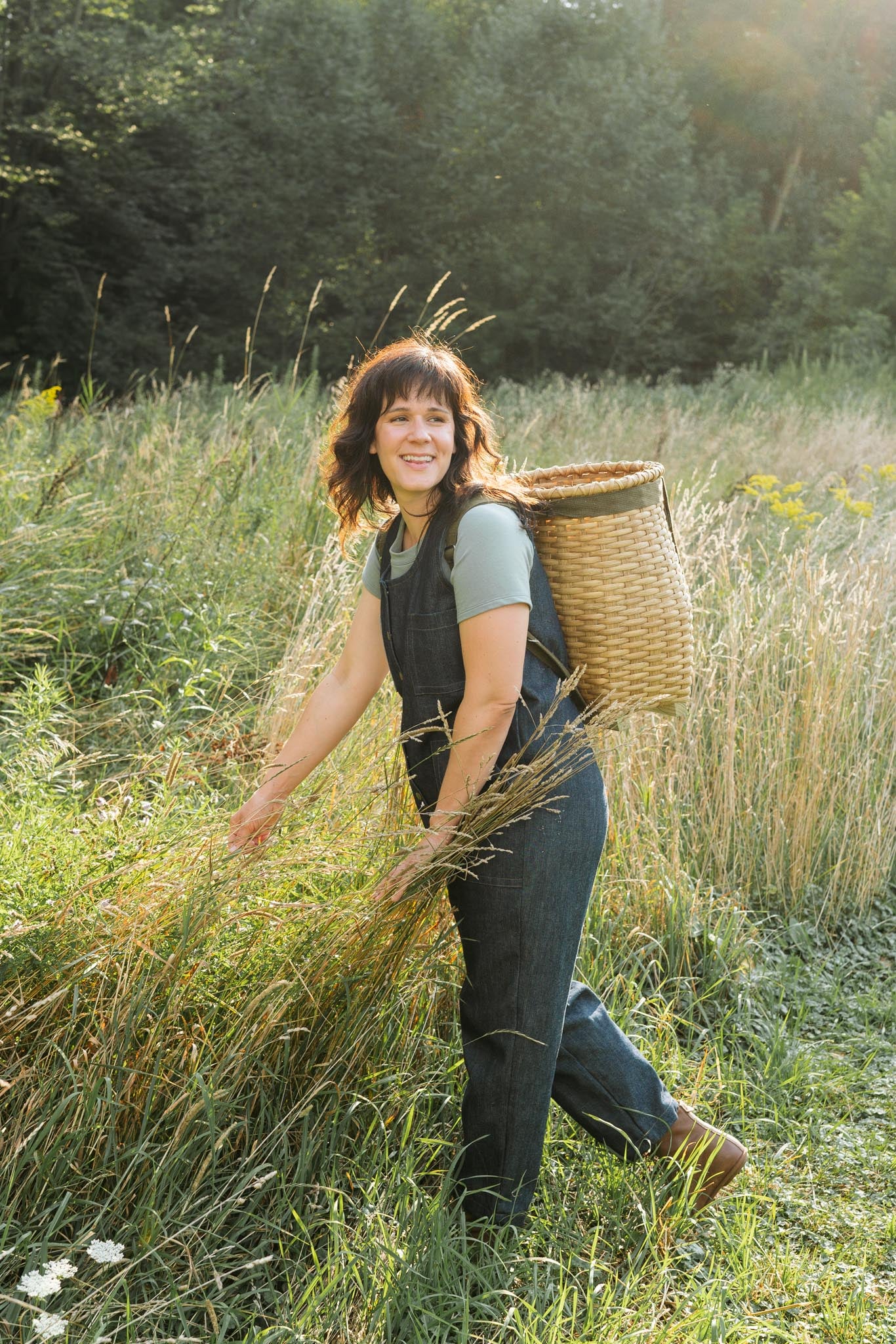The harvest moon a few days ago marked an official beginning to autumn here in Michigan, and the bright, glowing moon shines for multiple nights to offer farmers just a gleam more of daylight as they harvest their crops. Autumn is often the time that we reference harvests as it has historically been the time of year that our food crops are ripe and ready for picking. Of course, with today’s global shipping industry and the peak of food production science, the seasons hardly effect the availability of our favorite fruits and vegetables. However, food isn’t the only resource we grow in fields.
“. . .polyester and nylon are both derivatives of petroleum. Synthetic fabrics are. . .a product of the oil industry.”
At Conscious Clothing we strive to use fabrics that are as sustainable and natural as possible. In fact, all of our fabric is sourced from natural materials and, excluding our silk and wool, all of our fabrics are plant-based. The fabrics we use are free from many of the synthetic materials and chemicals commonly used to treat apparel. If you didn’t know_ polyester and nylon are both derivatives of petroleum. Synthetic fabrics are not only a product of the oil industry, but also require chemical-heavy processes to produce, and don’t break back down by natural means, just like any other plastic.
Plant-based fibers are derived from renewable materials and, when free of chemical-heavy treatment, are able to decompose via organic processes to be returned to the soil, able to grow new plants. It is vital to our business model that in creating products, we are not contributing to the excessive consumption and waste of our society. The reason our clothing is different is because its durable enough for lifetimes, but not an eternity and when its usable lifetime has passed, it will slowly disappear to leave behind exactly what was intended_ nothing.
The three main plant-based fabrics we use at Conscious Clothing are linen, cotton, and hemp. The production processes for these plants differs slightly. Cotton is probably the most familiar plant to people. It’s flowers form a bur, which is the soft, fluffy part that we extract the fibers from. This fuzzy ball contains the seeds, which are removed via the ginning process, and the fluff is then carded, combed, and spun into yarn for fabric.
An additional factor to cotton production is “organic” label. Organic cotton is just as water-intensive as regular cotton, but organic cotton is grown while avoiding chemical-heavy pesticides and genetically modified organisms. Using organic fertilizers and biological pest control methods can help keep the process of growing cotton from contributing to land and water pollution through chemical runoff.
Bast fibers like our linen and hemp aren’t so straightforward. While cotton fibers grow fruit-like, held out and prime for picking, bast fibers must be extracted from the stem or stalk of the plant. The stalks of the plants are either cut or pulled up from the ground to undergo a process called retting. Retting uses moisture to soften the tissue around the fiber, and then the stalks are threshed to separate the fibers from the rest of the plant material. The process of hackling combs the long fibers out before they are finally spun into yarn for fabric.
“Hemp and linen are also excellent bast fibers because they don’t require chemical fertilizers or pesticides, little energy and water, and all parts of the plant are used.”
Hemp and linen are also excellent bast fibers because they don’t require chemical fertilizers or pesticides, little energy and water, and all parts of the plant are used. Unlike cotton, the rest of the hemp and flax (linen) plants are used to make products like linseed oil, cattle feed, soap and fuel. The seeds are an incredible source of protein and are used in many human dietary supplements.
While cotton’s softness is unmatched, it is a very chemical- and water-intensive crop. Fabrics like hemp and linen can be “cottonized” or brushed to soften the fabric’s texture and cotton can be mixed with less resource heavy fibers like hemp to produce a more durable product that’s just as soft.
These plants allow us to find comfort and protection in the soft, warm shelter of our favorite garments. They offer us durable, sustainable alternatives to the synthetic-heavy fast-fashion machine and prevents us from contributing to the plastic waste problem. When we are conscious of the options placed before us, we can choose not only what is best for our needs, but the needs of future generations, and of the well-being of the planet. Plant-based products like our clothes are truly sustainable because they participate in the natural cycles of the Earth. Participate consciously.


